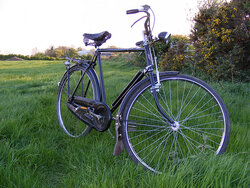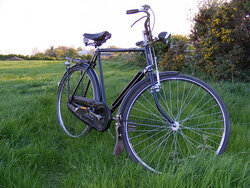mickle
innit
- Location
- 53.933606, -1.076131
But the original assertion was that one shaft is the same as another and that nothing significant had happened in 100 years. As you say, there are differences between different applications (carbon tubes, for instance) and changing the shape of the bevel gear's teeth has reduced the losses at either end of the shaft.
A clean, new chain on fresh teeth might be 98% efficient but I doubt that anyone who uses their bike for cycling through the muck and grime will be seeing that level for much beyond the first few hundred yards.
Shafts were also less popular because of the gear options, not just because of the efficiency differences. It was easier to get a wide spread of gears with cogs on both axles. Shaft drive were limited to 3-speed hub gears one just the wheel axle.
I think (I read the article a few days ago so could be wrong) that there's a simple release system so pulling the wheel out should be straight forward.
And I stand by that assersion. No great technological leap has occured in the area of shaft drive bevelled gears for 100 years. The condition of an old worn out bicycle chain has to get very very bad indeed before it matches the inefficiency of a brand new top o' the range shaft drive. That's the beauty of chains and sprockets, provided they aren't actually rusted solid they are remarkably efficient right up to the moment they fall to bits.
The benefits of shaft drive are clear, cleanliness and low maintenance among them, but you can't argue that shaft drives achieve anything like the efficiency of chains.



